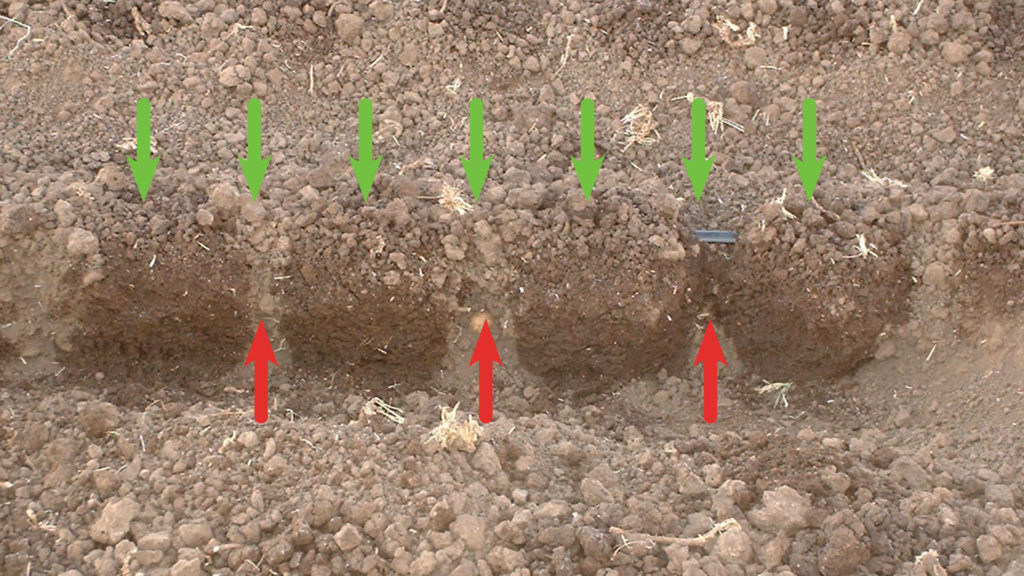
Benefits of close emitter drip spacing to seed germination and close planted seedlings
In traditional seedling planted crops such as tomatoes where the plants are 40cm (16”) apart, the general approach is to have at least one emitter per plant. This would result in using a drip tape product with emitters spaced every 30-40cm (12-16”). Taking this approach ensures that all sides of the plant root ball can be wet up during a typical irrigation event.
In situations where seedlings are planted closer together, the same agronomic principle applies, but does result in needing to consider the closer emitter spacing products to achieve the same outcome.
In the case of crops such as lettuce, garlic, celery, or strawberries, where the seedlings are planted 10-15cm (4-6”) apart, choosing a drip tape that has emitters at these spacings will maintain an even wetted zone along the plant row and improve the evenness of plant growth.
Using drip tape products with emitter spacings wider apart than the plant spacing, can result in dry patches forming within the bed, especially as the plants grow and the root ball of each plant develops.
Spacing too wide


In the above image, the green arrows represent plants. The wetted zone of each emitter is clearly visible and the potential for dry soil zones in the bed are shown as red arrows.
In this situation, up to 50% of the plants can be impacted by having some of their effective root system in dry or drier than average soil. This can result in variability in plant growth and negatively impact crop productivity.
In situations where crops are planted as direct seed, such as onions and carrots, the challenge is to ensure that the drip tape product meets the following criteria:
- Emitter wetted zones merge quickly.
- An even band of moisture can be created along the plant row.
- Each seed/plant row either side of the drip tape is wet-up uniformly.
- The band of moisture extends evenly outside the seed/plant row.
- The moisture does not move down through the profile too far.
Want to know more? Download the full guide here >>





